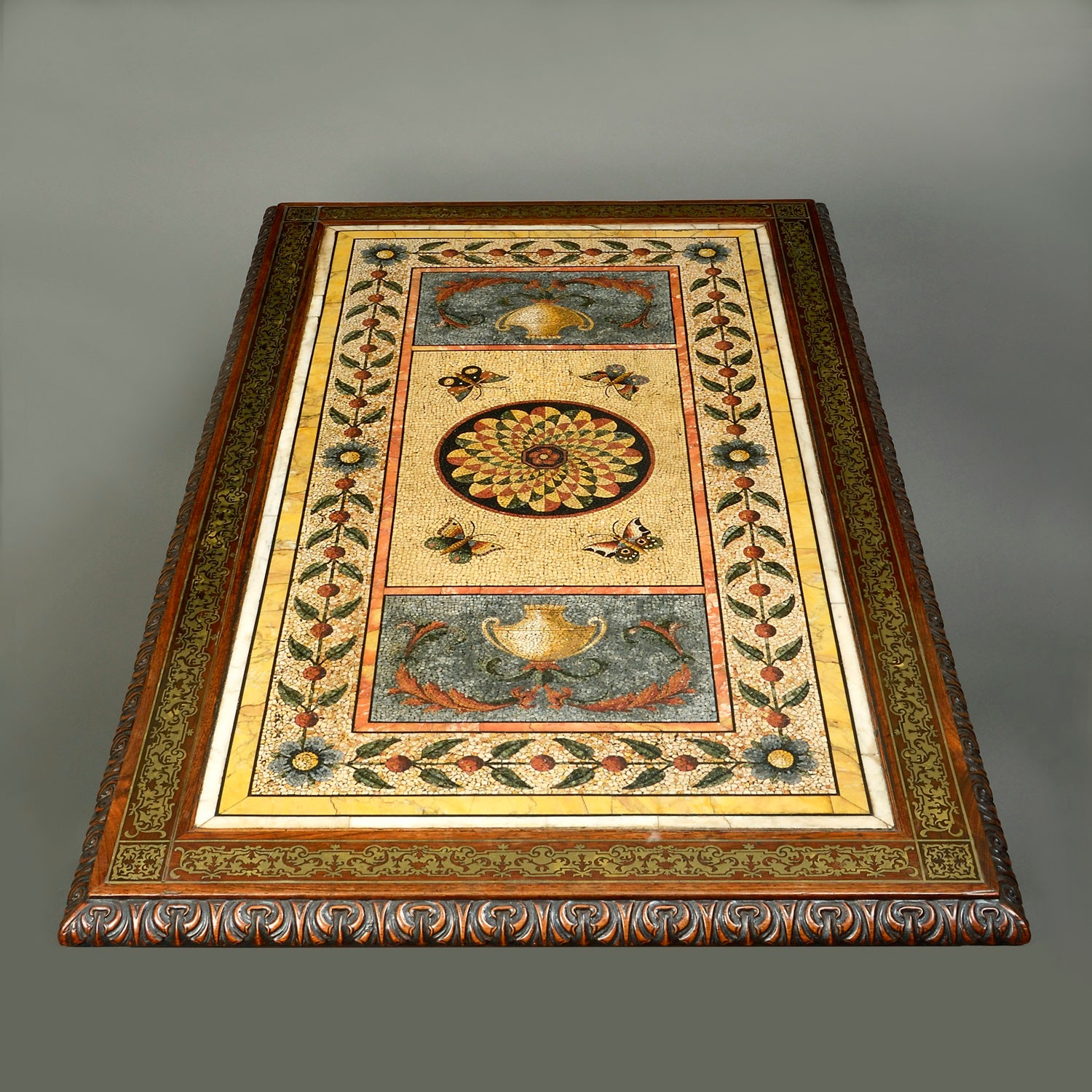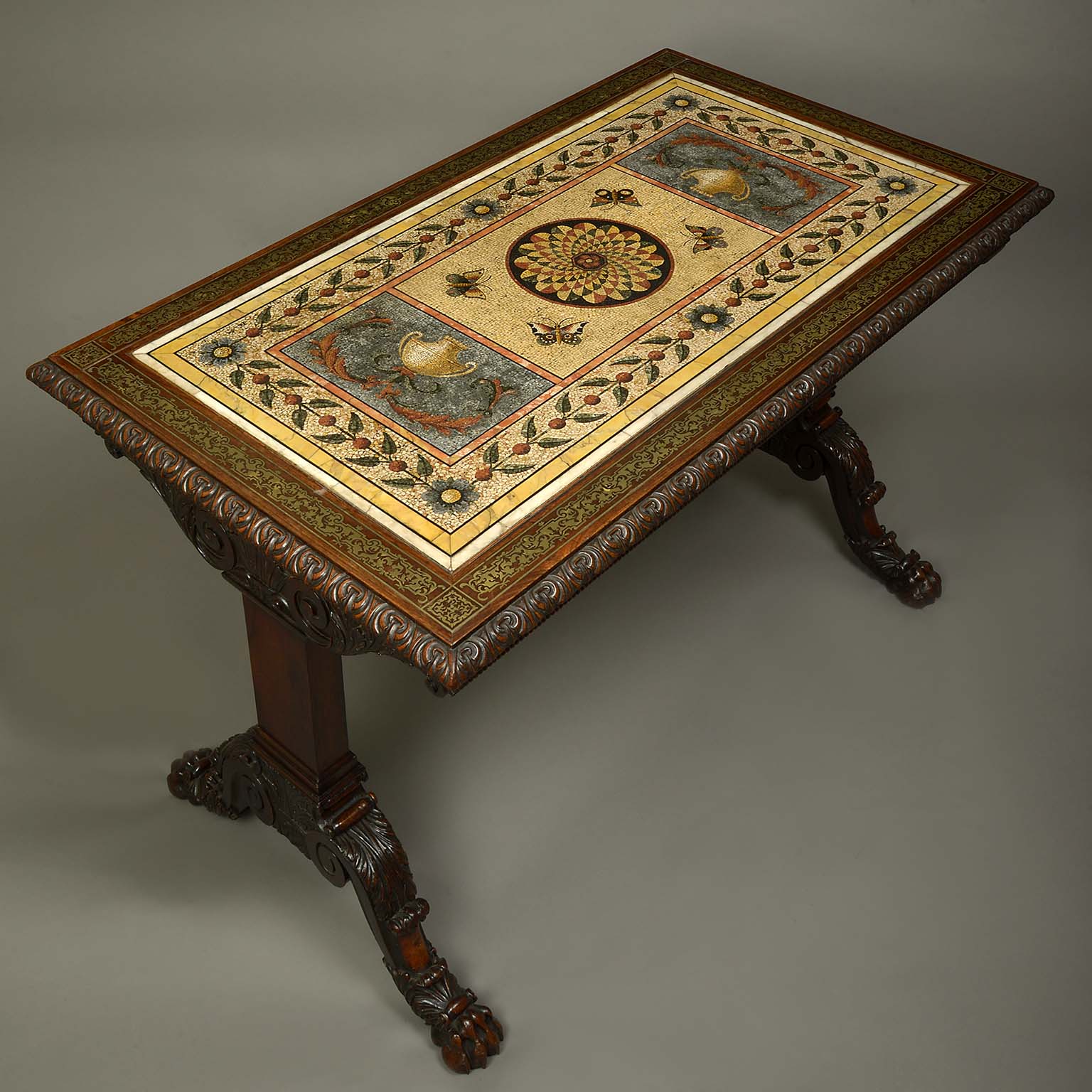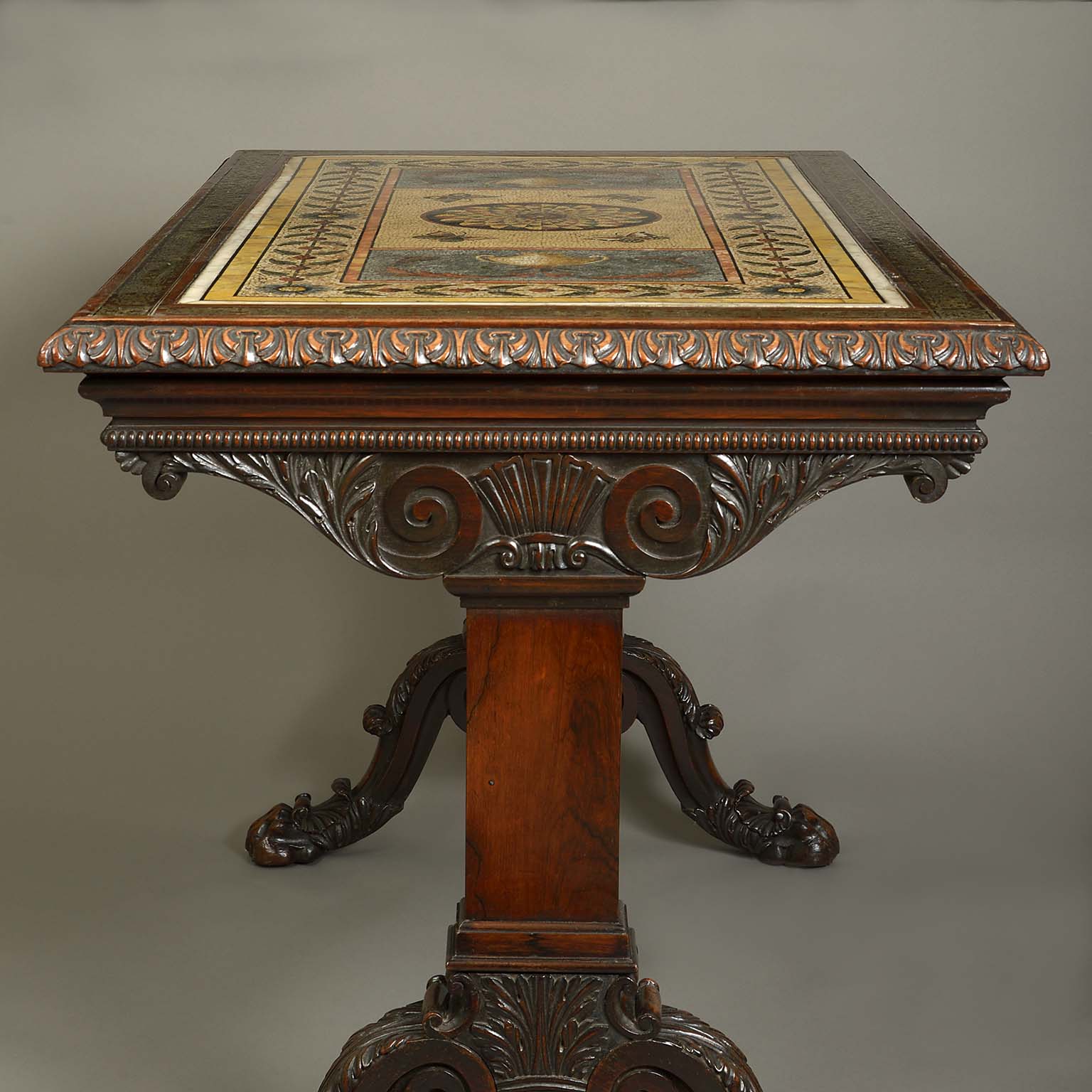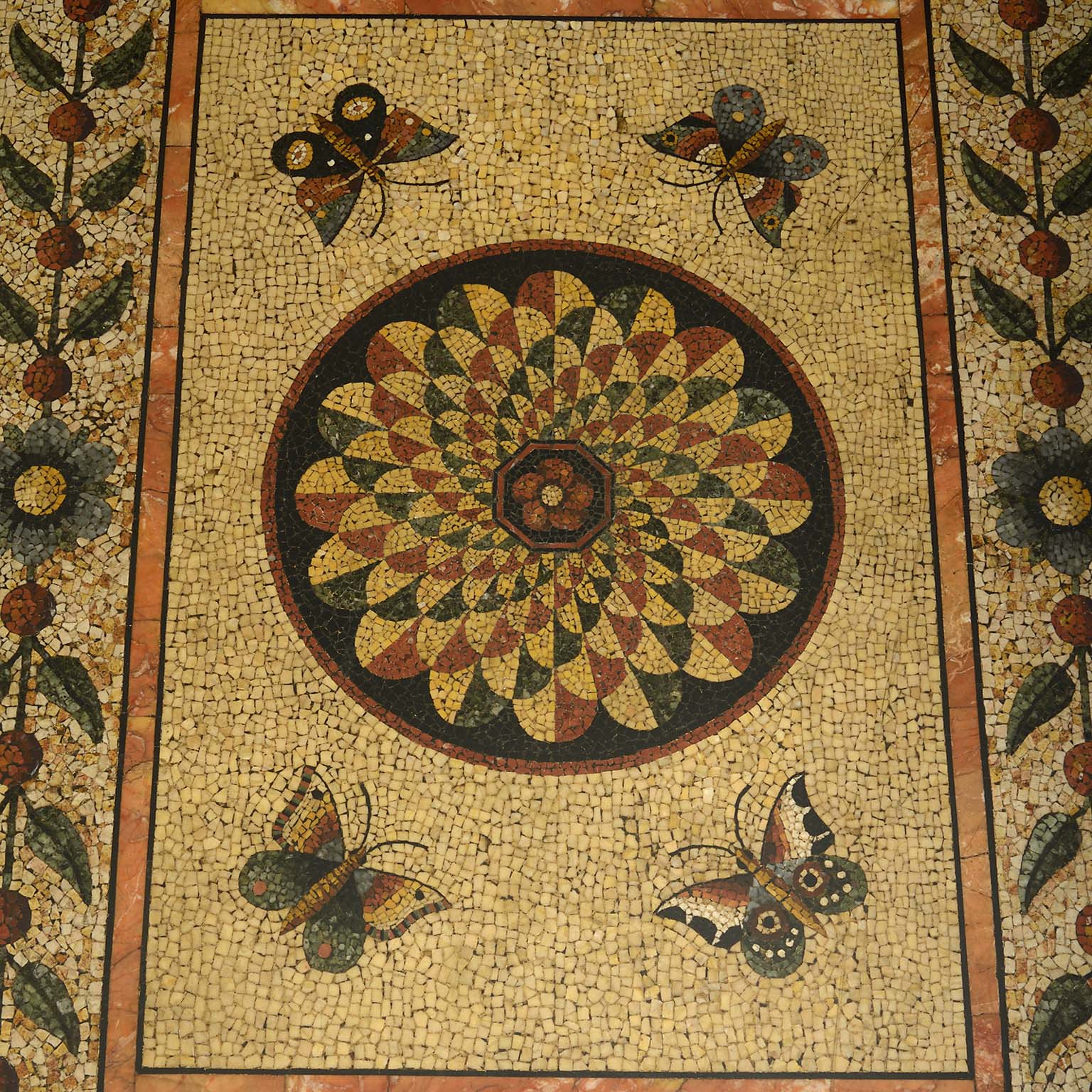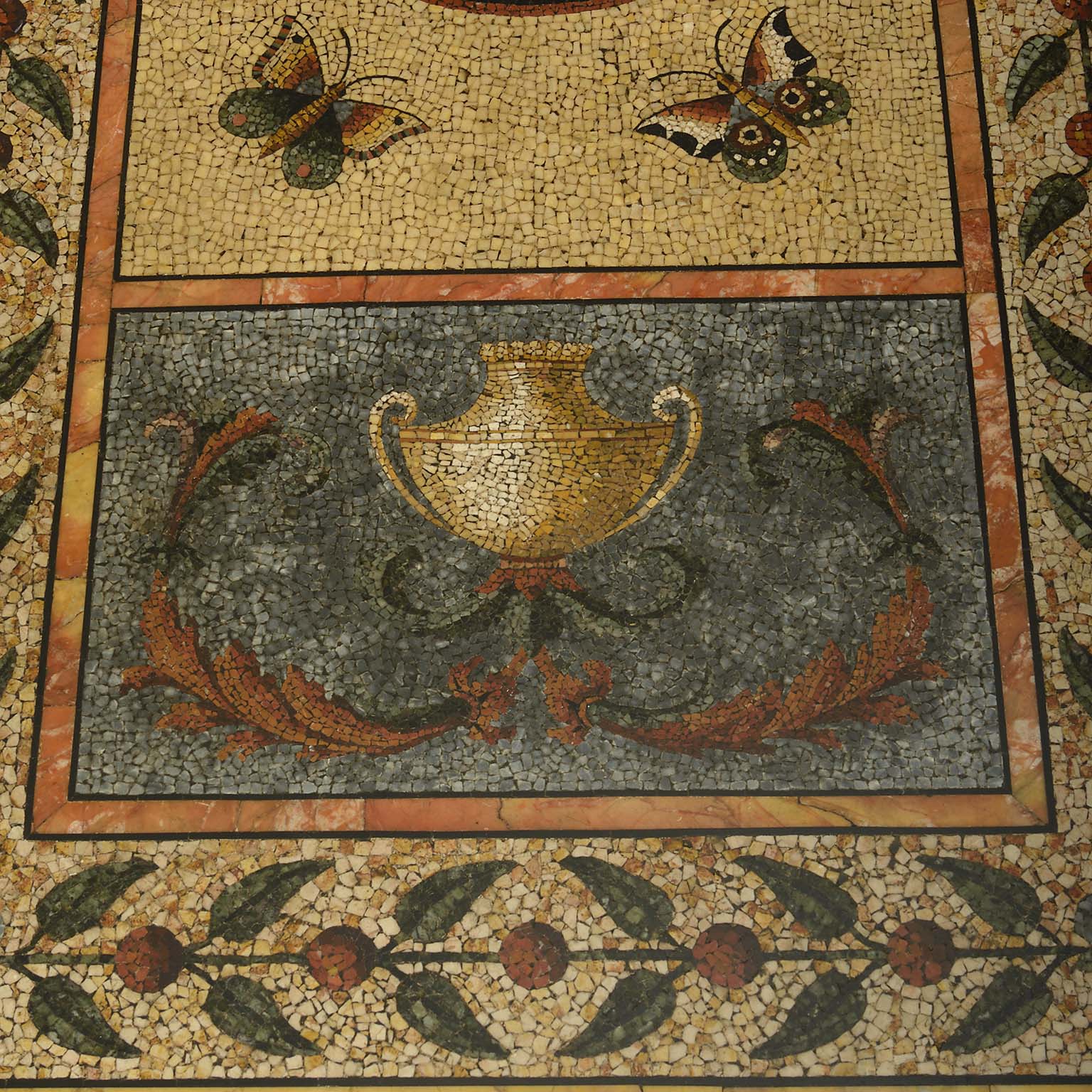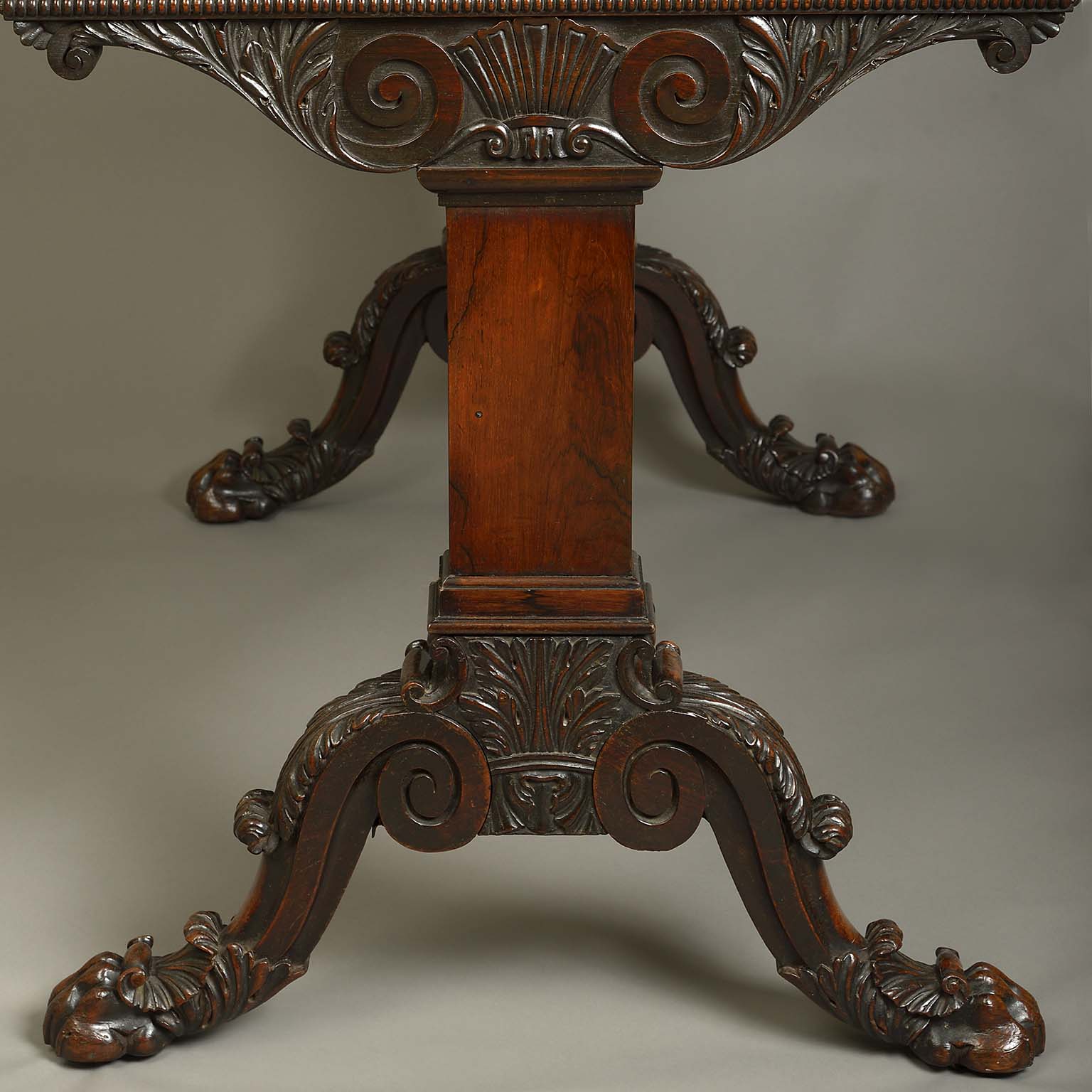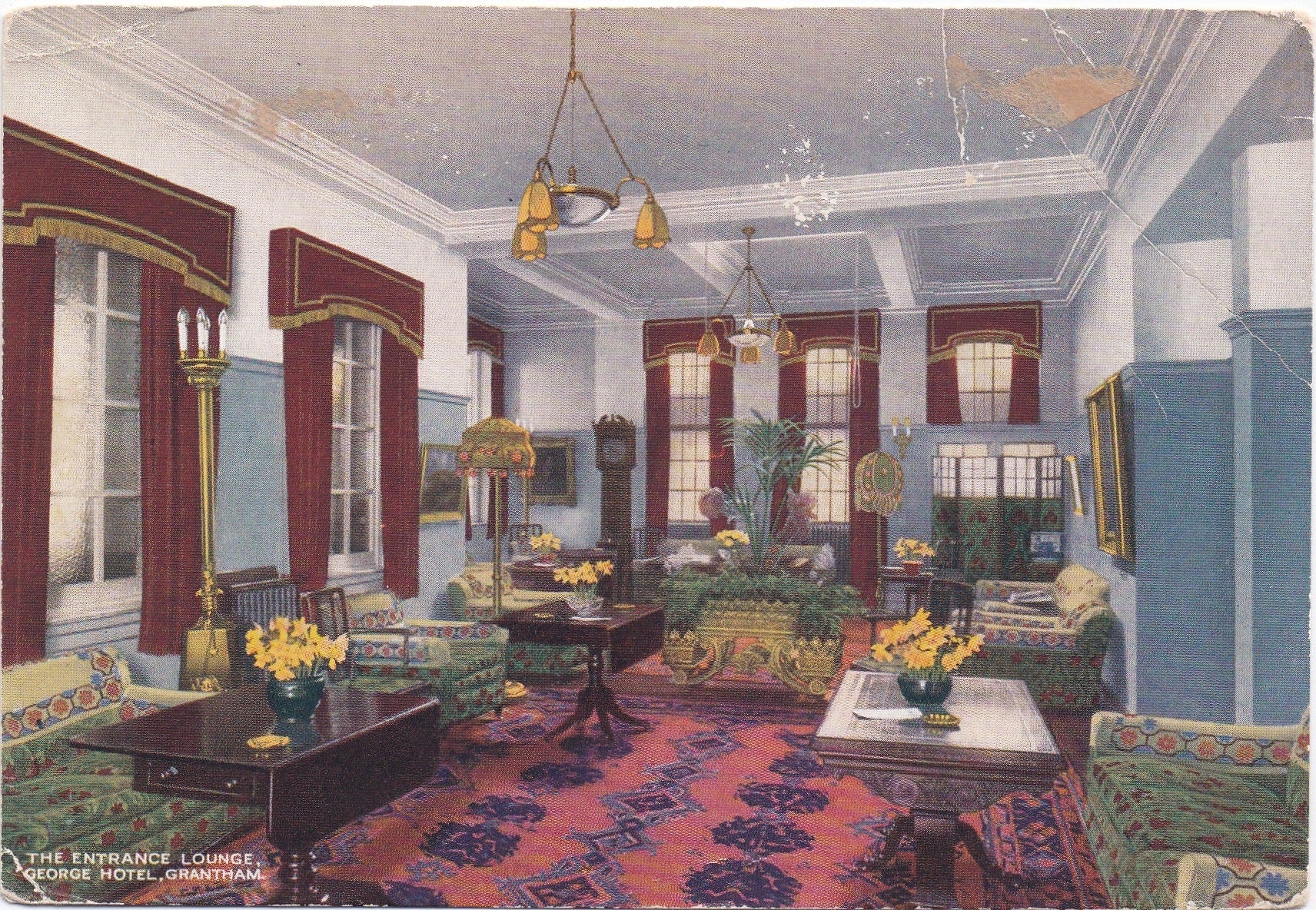An Important Rosewood Brass Inlaid Centre Table with a Grand Tour Roman Mosaic Top
SOLD
Height: 29 ¾” (75.5 cm); Width: 45 ¾” (116 cm); Depth: 26 ½” (67.5 cm).
The top Rome circa 1770-1790 probably from the Vatican Mosaic Workshop and possibly an early work by Giacomo Raffaelli.
The base almost certainly commissioned Circa 1815-20 from Gillows of Oxford Street, London, to house the mosaic top.
The brass inlay likely to have been supplied by Constantin Le Gaigneur.
The Vatican workshop:
The above together with the Grand Ducal workshop in Florence were the centres of the finest mosaic, micro-mosaic and pietra dura work in Italy. The present table top with its large tesserae relates to the mosaic work seen in ancient roman floors and pavements.
Giacomo Raffaelli: 1753-1836
One of the most celebrated mosaicists Raffaelli undertook many commissions for European Royalty, including the King Stanislaus 11 Augustus of Poland, Pope Pius VII and Napoleon.
Trained as a painter and sculptor from an early age, he became a master in Florentine hardstone mosaics and Roman micro mosaics. He often expressed his genius by combining both techniques in the same works of art.
Gillows of Lancaster and London 1760 to late 19th Century.
Among the leading English cabinet makers Gillows were renowned for their high quality of cabinet work and selection of the best timbers. Extensive records of their commissions remain in the British Library but unfortunately most of their London commissions are lost. However, we do know that Constantin Le Gaigneur supplied distinctive brass inlay to several London workshops including Gillows.
The George Hotel, Grantham, Lincolnshire
Shortly after I began to research this magnificent table, I had a huge stroke of luck.
I came across a 1933 postcard of the entrance lounge of the George Hotel, Grantham and there it was the table in all its glory. The George was built in 1780 by John Manners, the illegitimate son of the Duke of Rutland, as a luxury half way resting place on the main road between London and the North. Grantham was also not far from the celebrated but now defunct Lincoln racecourse which traced its history back to James 1 in 1607. Indeed a visit to Lincoln racecourse is mentioned in our treasured postcard.
Although there is no record of Raffaelli producing a mosaic top incorporating large tesserae there are many features of our top which relate to his work: the depiction of butterflies, twining vines and berries, foliate sprays and shaded classical urns. Furthermore, the use of marble borders is typically characteristic of his integration of hardstones and mosaics.
The design, exceptional cabinet work, brass inlay and fine timber selection all point to Gillow’s London workshop. On page 291, volume 1, of Susan E. Stuart’s definitive work Gillows of London and Lancaster there is an illustration of the brass inlaid border and carved edge to the top of a library table which she attributes to Gillows of London. The brass inlay and carved edge on the present table is identical to the latter. Furthermore, the distinctive carved detail and design of the base can be closely compared to other Gillows works. Given this evidence one can conclude that this table base was made by Gillows.
Provenance:
John Manners (1730-1792) of Buckminster Park and Hanby Hall
Married
Louise Tollemache (1745-1840 ) 7th Countess Dysart
By descent
William Tollemache (1766-1833) 8th Earl of Dysart and self-styled
Lord Huntingtower
The George Hotel Grantham, part of the Tollemache Estate
Managed until 1855 by a Miss Fraser
Subsequently tenanted by John Fillingham 1855-1879
and the Fillingham family for 112 years until Herbert Fillingham
retired in 1967
By direct descent to Derrick Fillingham (d .2019) father of the previous vendor
For tables with related features see Woolley and Wallis, Salisbury 5th of November 2022 Exbury House, Le Gout Rothschild lot 225 £208,000
Christies, Paris 22nd September 2010 lot 441 217,000 euros
Lit: Gillows of Lancaster and London by Susan E, Stuart published by the Antique Collectors’ Club Volume 1 page 291
Foot note: The original postcard, showing the table in situ, is available to the purchaser together with a detailed invoice from Philip Barker, the renowned furniture restorer, who carried out careful conservation.
Collections: Archive
Share:
